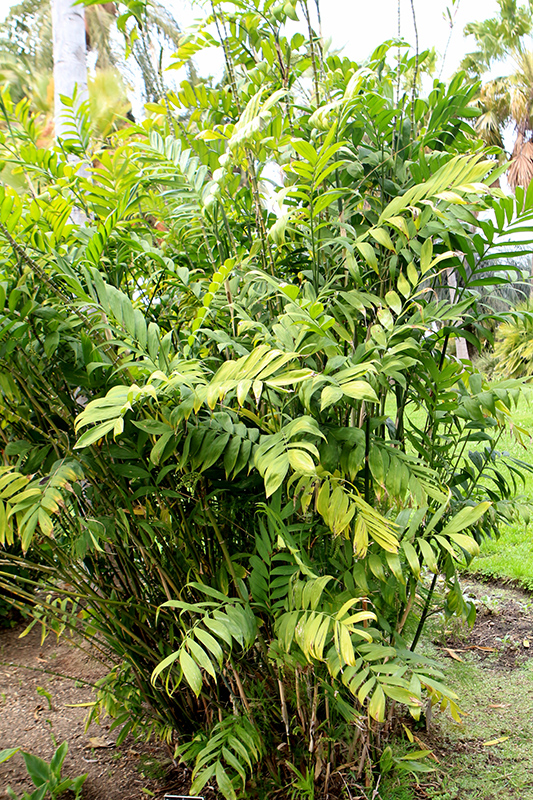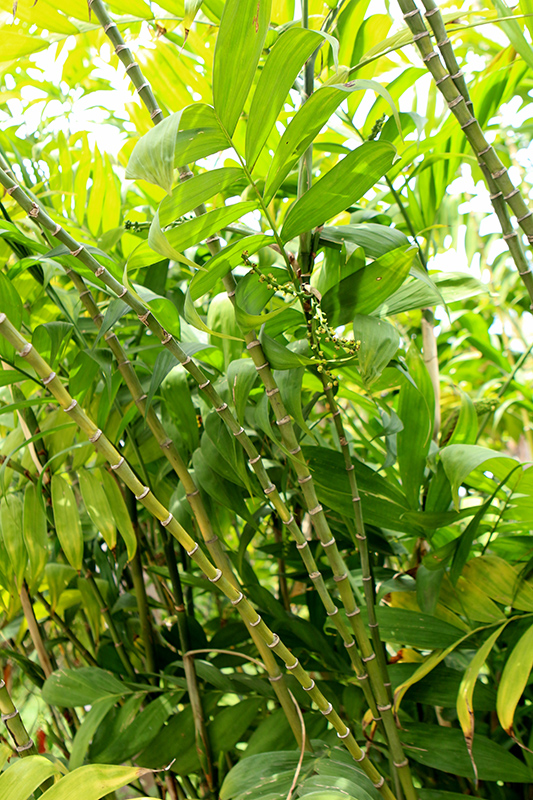Height: 8 feet
Spread: 5 feet
Sunlight:
![]()
![]()
Hardiness Zone: 9
Other Names: Parlor Palm, Parlour Palm
Description:
A compact, clump forming palm that is low maintenance; graceful fronds arch out from central stems, creating an elegant accent for the patio or garden; great for bright, filtered light areas; attractive fruit on female plants; do not overwater
Ornamental Features
Hardy Bamboo Palm is primarily grown for its highly ornamental fruit. The fruits are showy red drupes carried in abundance from late summer to early fall. It features dainty clusters of white flowers along the branches from early to mid summer. It has green evergreen foliage. The narrow pinnately compound leaves remain green throughout the winter.
Landscape Attributes
Hardy Bamboo Palm is an open multi-stemmed evergreen shrub with a shapely form and gracefully arching branches. Its relatively fine texture sets it apart from other landscape plants with less refined foliage.
This is a relatively low maintenance shrub, and should not require much pruning, except when necessary, such as to remove dieback. It has no significant negative characteristics.
Hardy Bamboo Palm is recommended for the following landscape applications;
- Accent
- Mass Planting
Planting & Growing
Hardy Bamboo Palm will grow to be about 8 feet tall at maturity, with a spread of 5 feet. It has a low canopy with a typical clearance of 1 foot from the ground, and is suitable for planting under power lines. It grows at a slow rate, and under ideal conditions can be expected to live for approximately 10 years. This is a dioecious species, meaning that individual plants are either male or female. Only the females will produce fruit, and a male variety of the same species is required nearby as a pollinator.
This shrub does best in partial shade to shade. It is very adaptable to both dry and moist growing conditions, but will not tolerate any standing water. It is not particular as to soil pH, but grows best in rich soils. It is somewhat tolerant of urban pollution. This species is not originally from North America. It can be propagated by cuttings.


